There are a number of reasons to prune a rhododendron. Cutting away winter kill, making the plant bushier, and reducing the size of the bush are just some good reasons to prune back your rhododendron shrub. Learn how to prune a rhododendron, and get your shrub into tip top shape for the season.
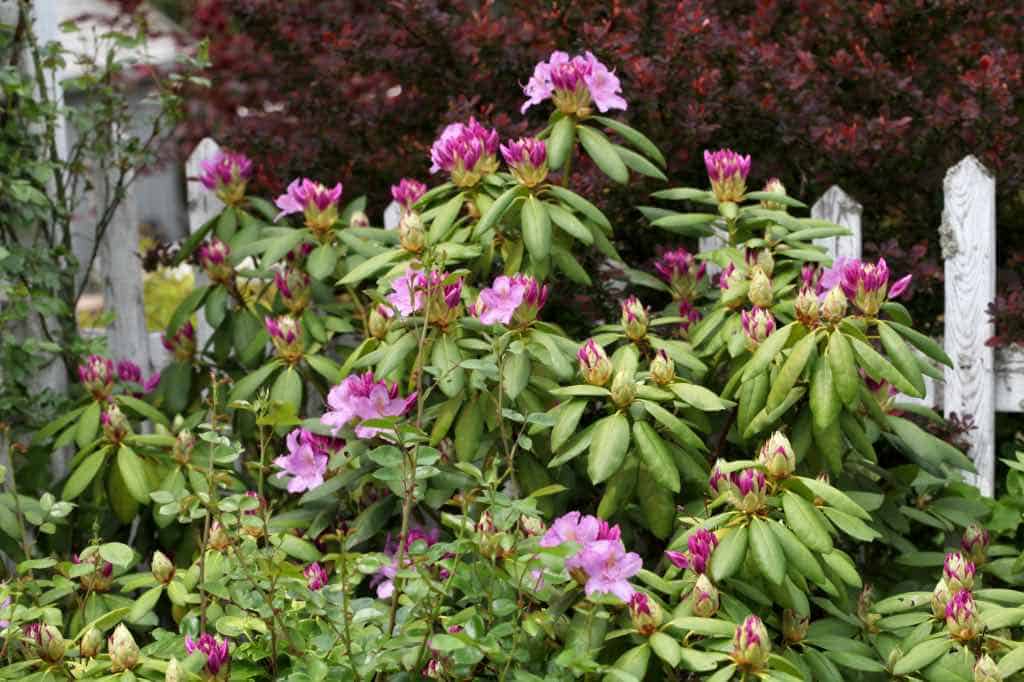
Rhododendrons are evergreen shrubs that produce beautiful flowers every spring. I love to walk the neighbourhood when these eye-catching shrubs are in bloom.
Spring is the time that these plants produce new growth flushes, and is the perfect time for pruning.
Rhododendrons have two categories of plants that are important to differentiate, before starting the pruning process.
These two categories include the elepidote and the lepidote rhododendrons.
Knowing the difference between the two categories of rhododendron plants will help to guide you in where to make the cut on the branches when doing your pruning.
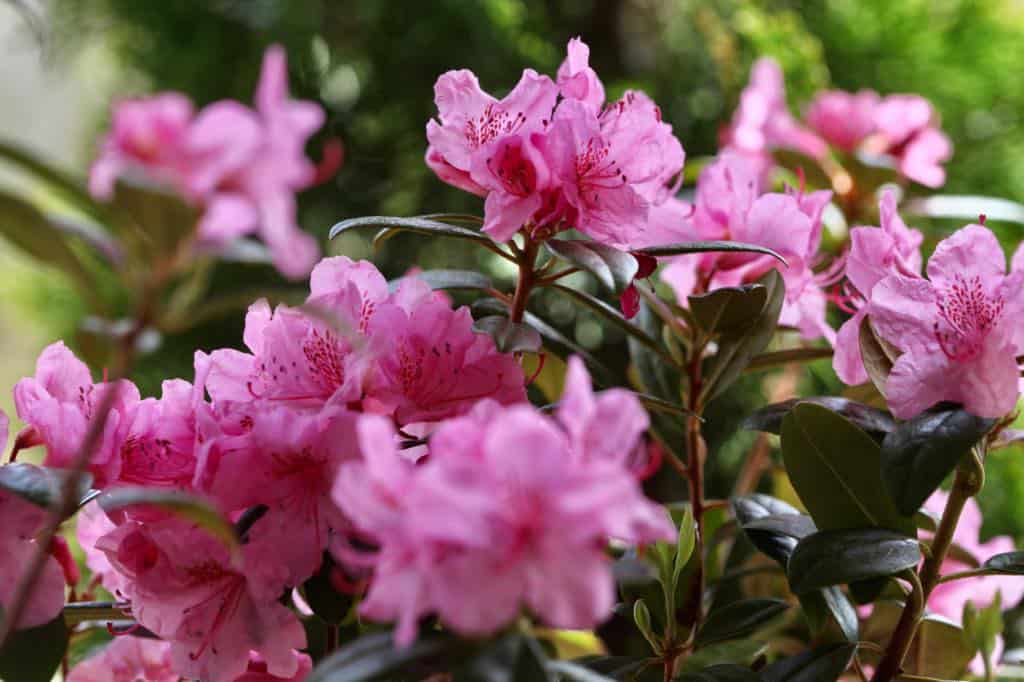
Pruning Elepidote Versus Lepidote Rhododendrons
Elepidote Rhododendrons
- Elepidotes are the large-leaved rhododendrons that have smooth leaves without scales. The large leaves are distributed in a whorl-like formation at the top of each stem.
- The leaves on elepidote rhododendrons are smooth to the touch, as noted when rubbing the leaf surface.
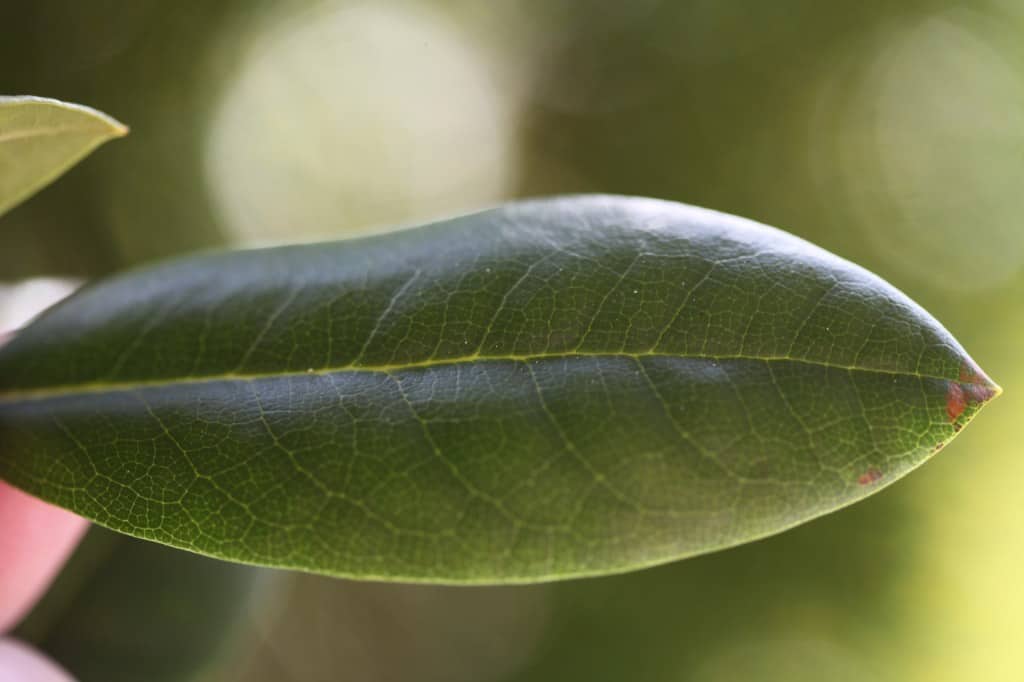
Lepidote Rhododendrons
- Lepidotes are the smaller leaved species with tiny scales on the underside of the leaves. These small scales are barely visible to the naked eye.
- The scales can be seen however, if you look very closely. They also create a pattern of dots, which can be seen on the top surface of the leaves.
- When rubbing the leaves on lepidote rhododendrons, they will feel slightly rough to the touch.
- These rhododendrons are shrubbier, and grow denser with leaves that come out alternately all along the stems.
Let's have a look at the leaf surfaces:
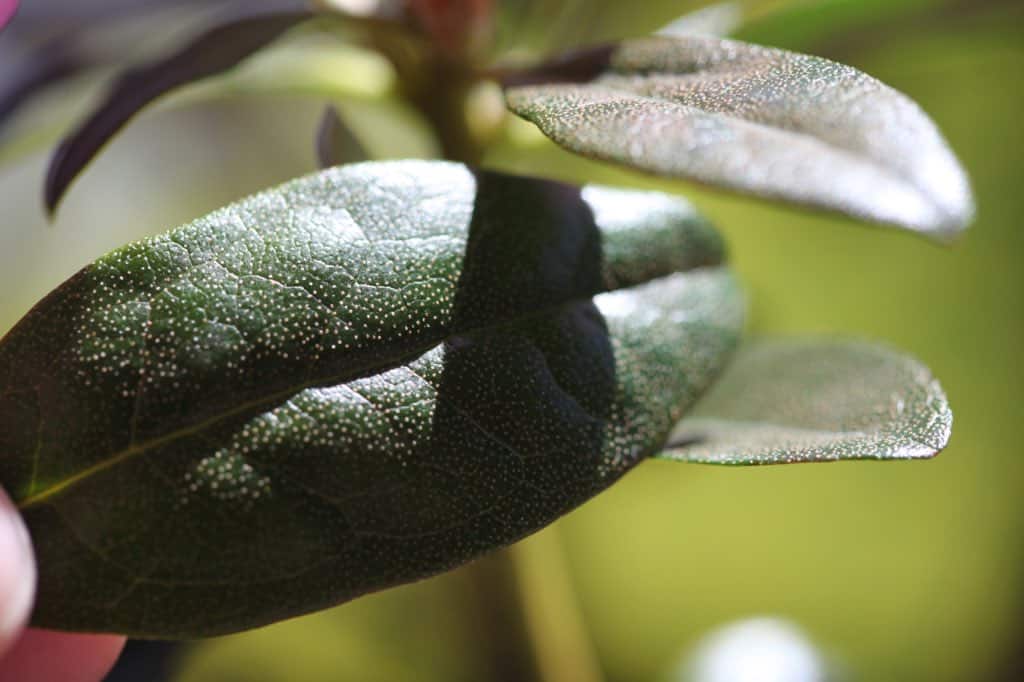
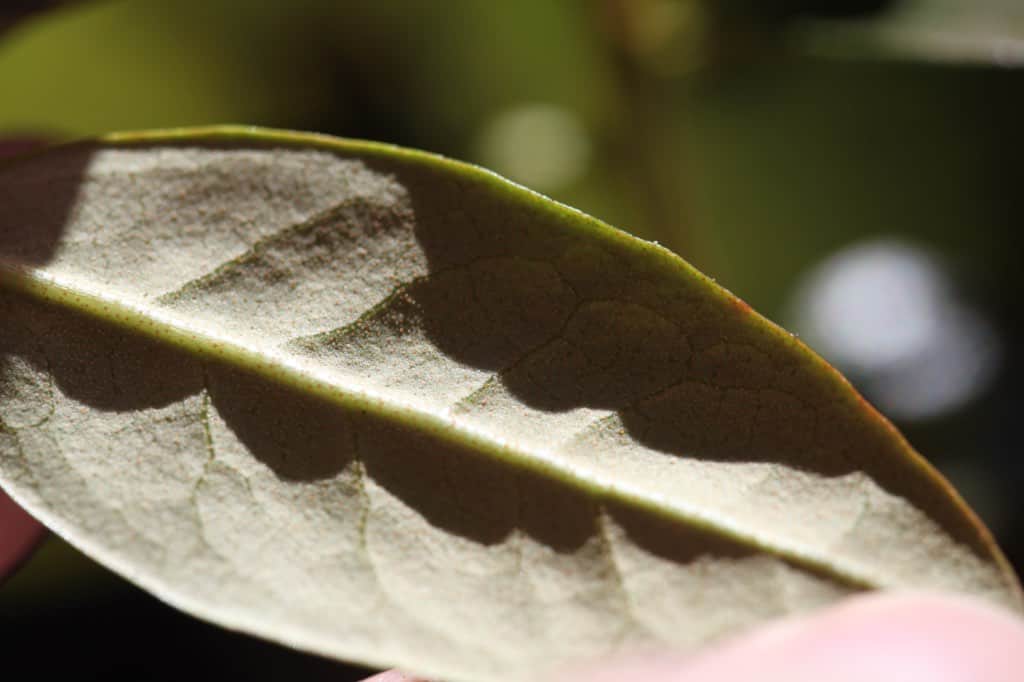
Pruning Elepidotes and Lepidotes
- When pruning elepidotes, prune back to an area along the stem where lateral leaf buds are visible and present. Prune just above these tiny buds.
- When pruning lepidotes there can be many latent buds along the stems that are not visible. This makes pruning much easier, as it allows you to prune back to an area on the stem where you want to make the cut.
- After the pruning, the hidden buds will sprout out, creating new stems.
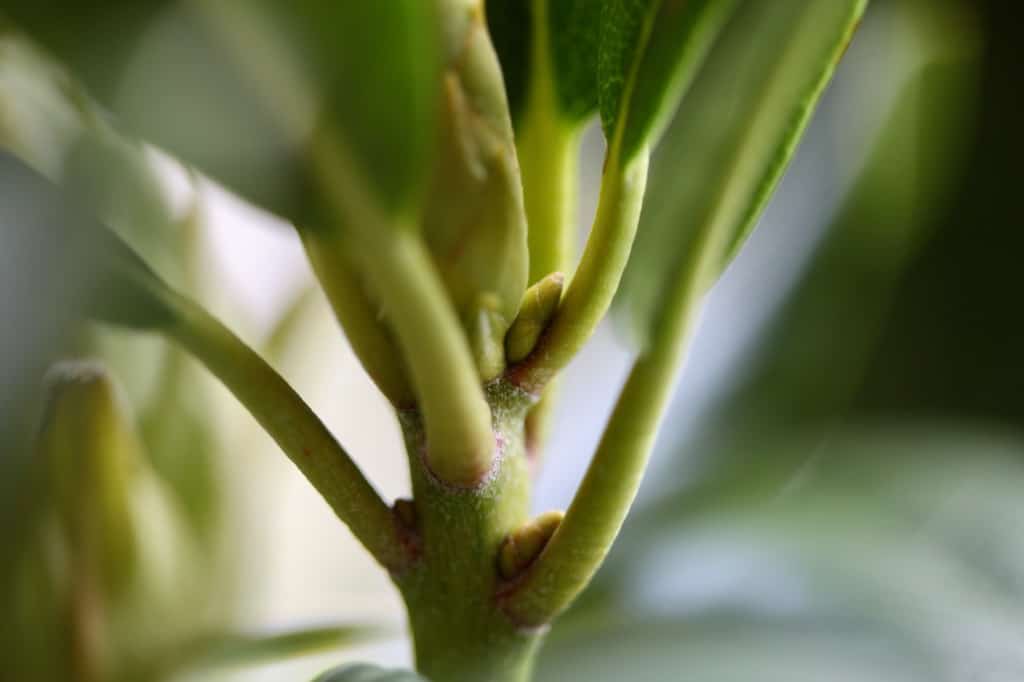
Reasons To Prune A Rhododendron
1. Controlling The Size Of The Plant
One of the first reasons to prune a rhododendron is to help to control the size of the plant.
Rhododendrons can easily outgrow their location
When you are planting a new rhododendron bush, it's very important to be aware of the potential size at maturity.
Evergreen rhododendrons have the potential to become very large plants.
These beautiful flowering shrubs can sometimes grow to be tree sized, depending on where they are growing, and the age of the plant.
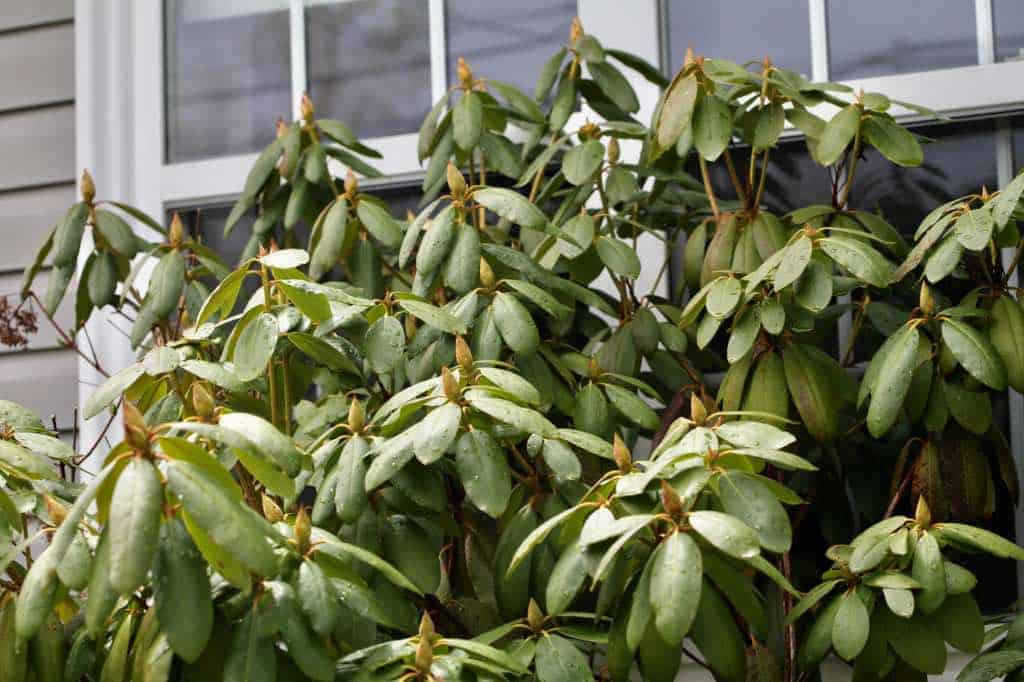
The tiny plant that you bring home from the garden centre can get very big over time. Give the plant lots of space to grow to it's full potential.
Try to make sure that it is planted in a place that will accommodate future growth. It is important to consider planting this plant in the right location from the beginning.
Sometimes however, they do become overgrown in the area that they are in. In this case the large rhododendrons will require heavy pruning or relocation.
Learn all about how fast rhododendrons can grow in the garden here.
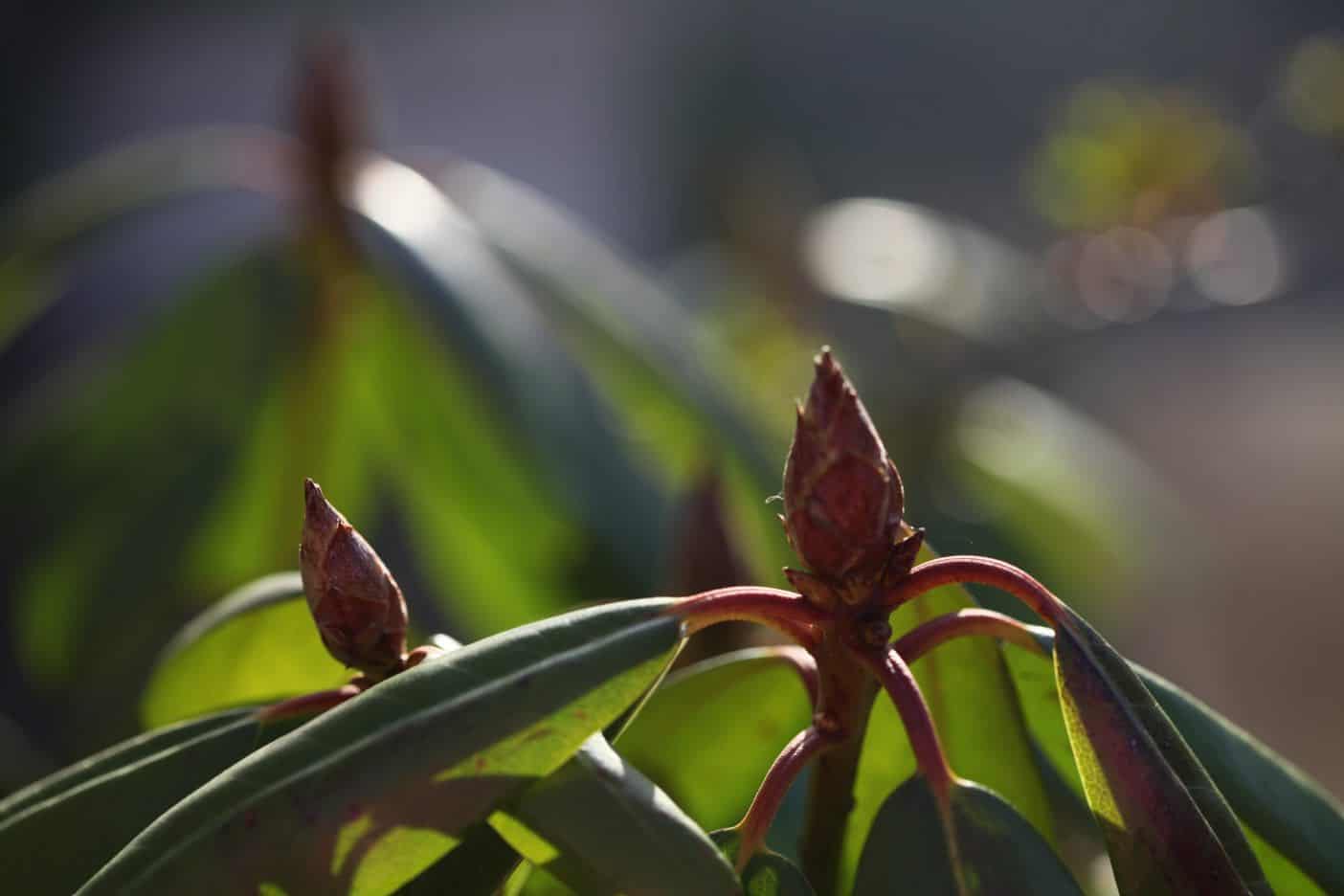
Often these shrubs are planted too close to structures when they are small. Then as the plant grows, it becomes overgrown for the space where it has been planted.
Rhododendrons are difficult to make small, once they have grown very large.
2. Taking Care Of Damaged Stems And Foliage
Another reason to prune a rhododendron is to clean up the plant, and remove damaged stems and foliage.
Rhododendrons are vulnerable to winter kill
Rhododendrons are evergreens, with leaves that remain on the plant year round.
In harsher climates, the leaves and stems are vulnerable to damage during winter months.
This damage is from the cold winter winds, as well as from the reflected winter sunlight.
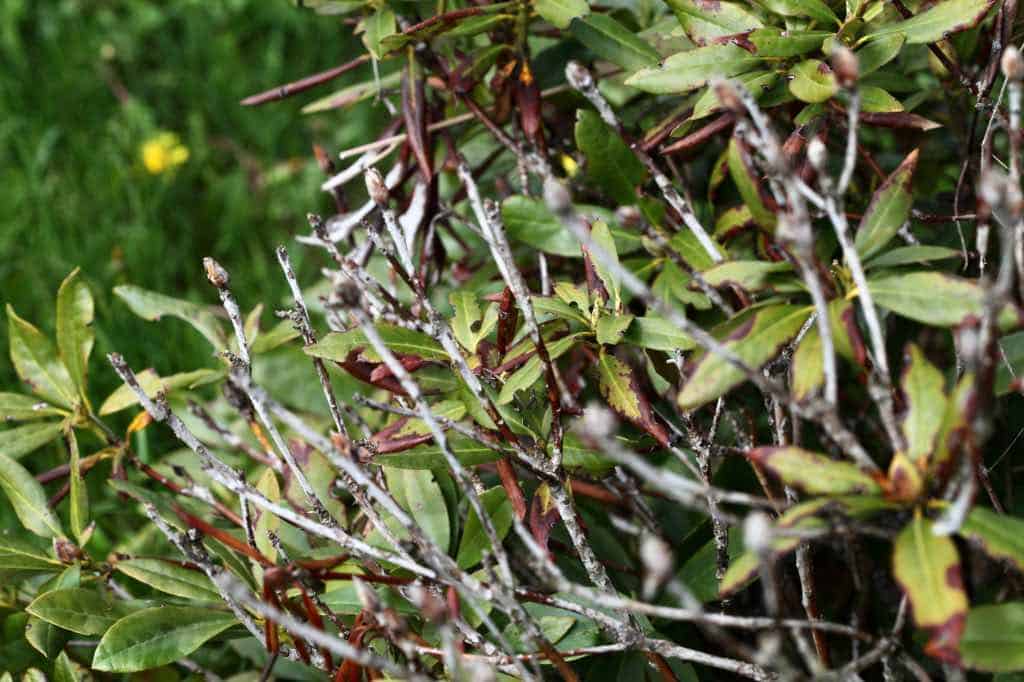
In our zone 5b garden, rhododendrons generally do very well when they are located in a protected area, away from strong winds.
The winters in our growing zone can get very cold. The icy winds can wreck havoc on the evergreen leaves of these flowering shrubs if they are exposed.
In early spring the evidence of winter damage becomes apparent.
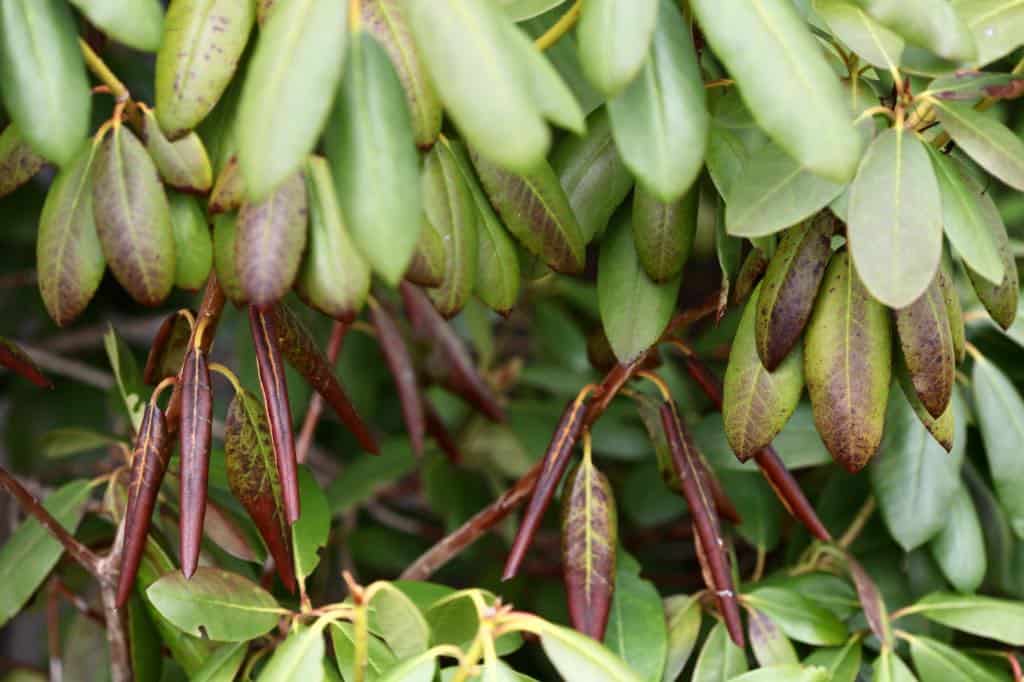
Sometimes I will find find broken or dead stems amongst the healthy branches. There may also be brown coloured drooping leaves, which are also evidence of the damage.
Rejuvenation pruning of the dead stems and leaves will help the rhododendron to recover from the injuries. It stimulates the plant to produce fresh new stems.
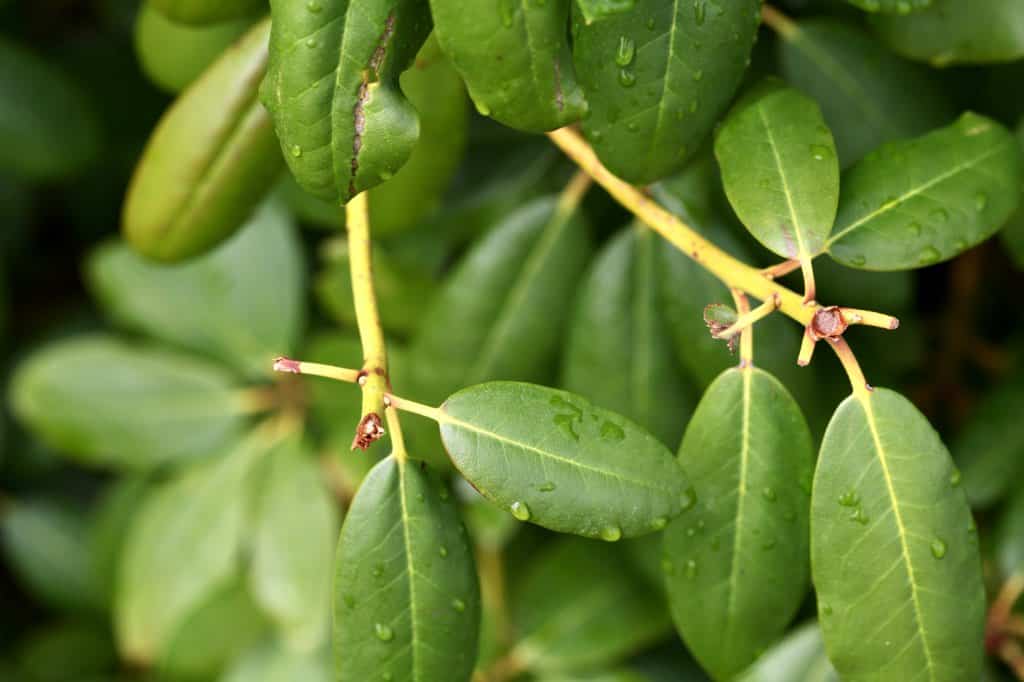
3. Creating A Fuller And Bushier Plant
A third reason to prune a rhododendron is to rejuvenate the plant, creating a bushier more healthy shrub.
Rhododendrons can become leggy
Sometimes rhododendrons develop a leggy appearance when the stems become long and the leaf numbers are reduced along the stem.
This can occur for several reasons.
If the plants are not receiving enough light, they may become long and leggy, with sections of leafless stem.
As well, if there has been damage to the rhododendron leaves for instance, the dead leaves will eventually fall off. This will cause a bare area along the stem, creating a leggy appearance.
The dormant buds along the stem may not sprout after the leaves drop, leaving parts of the branches bare.
Pruning these long leggy stems back will help to stimulate new growth and create a more bushy appearance for the shrub.
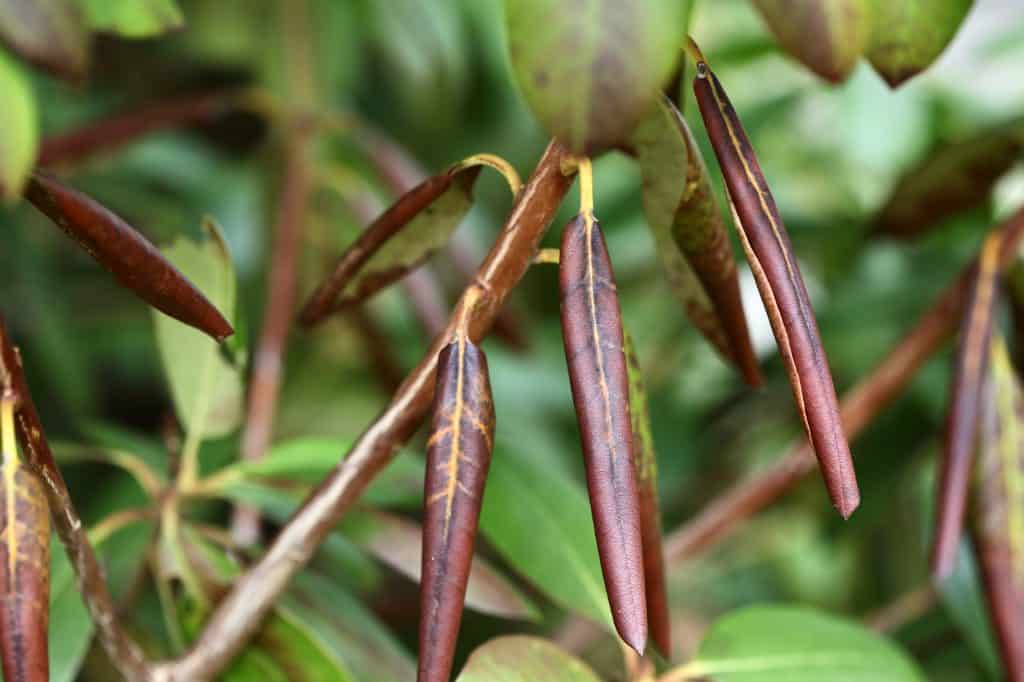
When Should You Prune Rhododendrons?
The best time of year to prune rhododendrons is in spring, right after the plant has finished flowering.
Spring is the best time of the year to prune, because a flush of new growth occurs at this time.
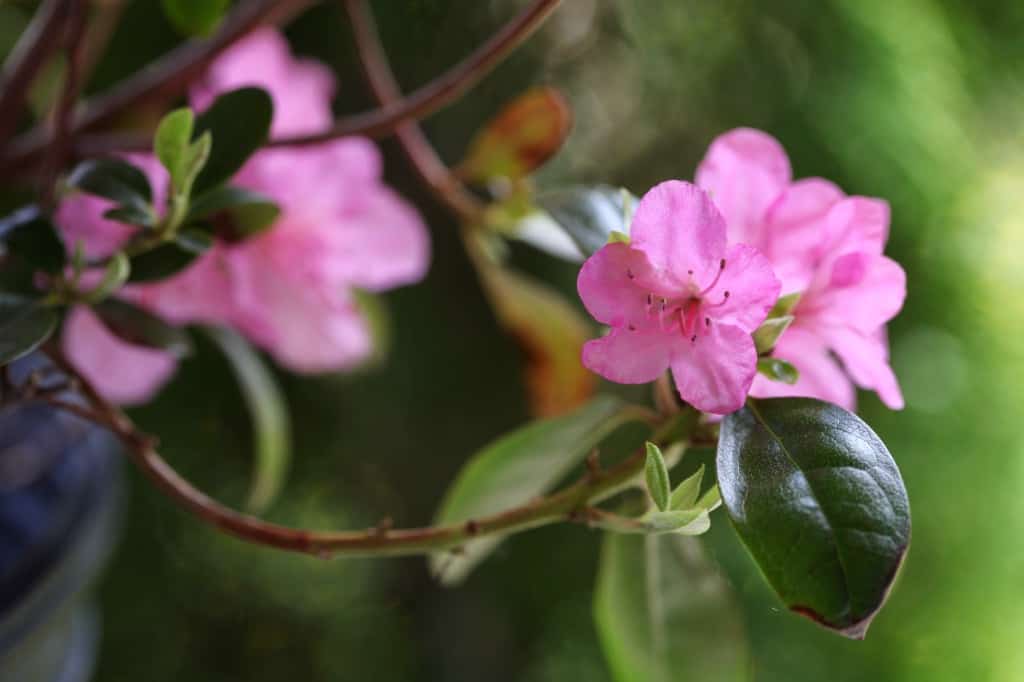
The new growth occurs from the lateral shoots along the stems, as well as from buds at the tips of the stems.
These buds are easy to see, especially under the leaf or flower buds that are forming in spring.
Pruning can be done to tidy up the plant at this time, removing spent blooms, dead leaves and branches.
It is also a good time for cutting back stems to reduce plant size if required. This will help to stimulate new growth from the leaf buds, and make a bushier plant.
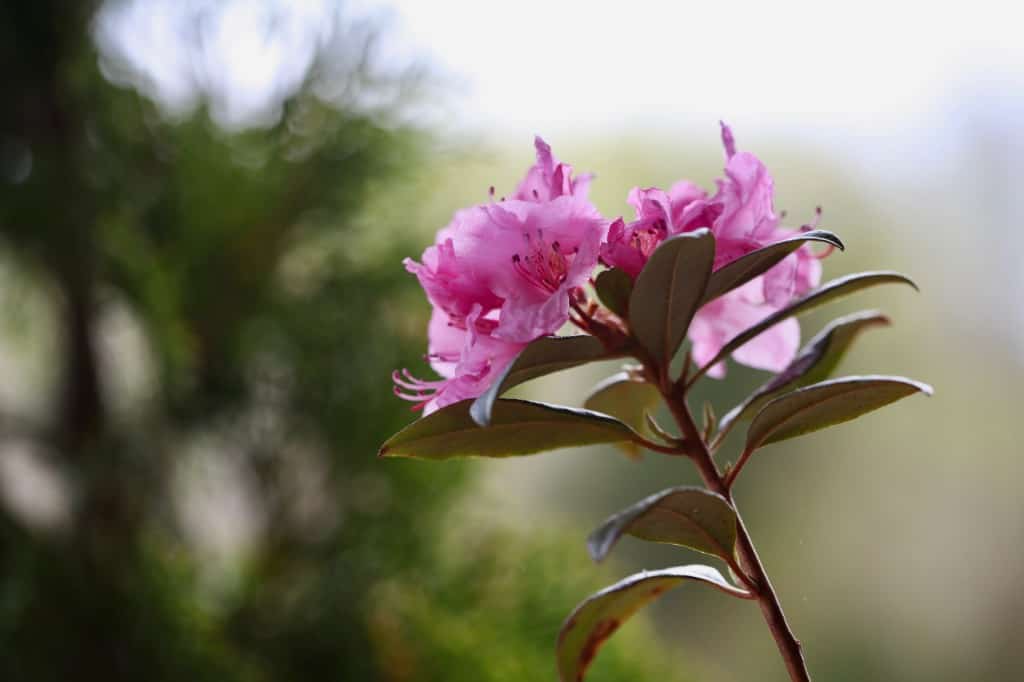
Can I Prune Rhododendron In Summer?
You can gently prune a rhododendron during the summer, by doing occasional trimming and removing older leaves or dead leaves for instance. Any major pruning to stimulate growth however, should be done in spring.
How To Prune A Rhododendron
So let's have a look at the pruning process for rhododendrons.
Pruning will help to reduce the size of the plant, clean up the plant, and help to keep the plant more compact when needed.
A general rule of thumb when pruning any shrub is to cut back no more than one third of the plant.
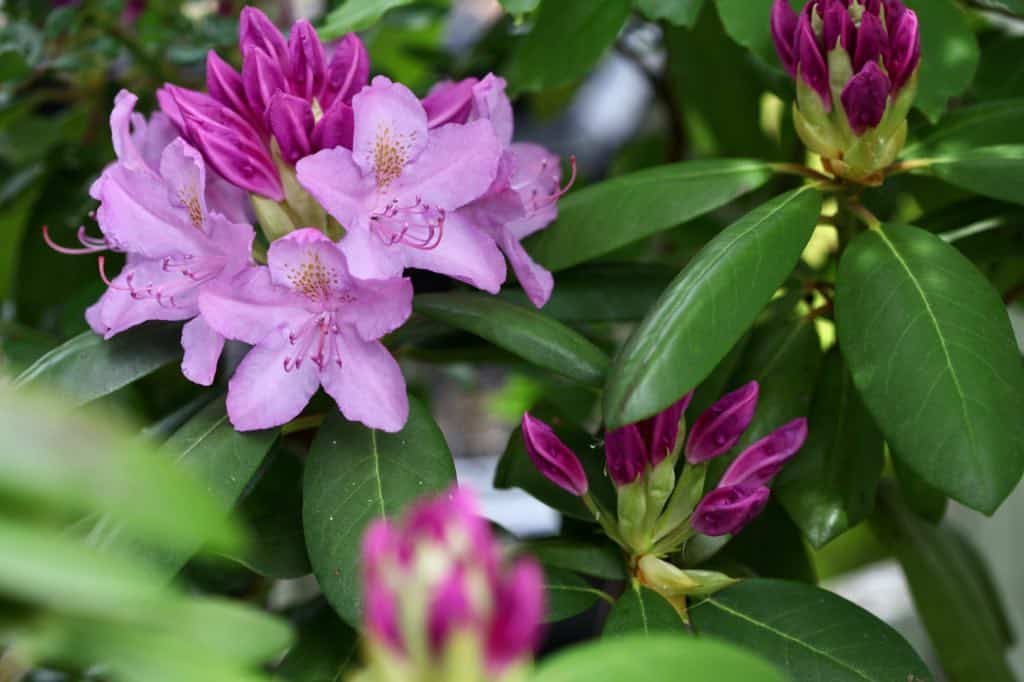
Tools You Will Need:
- Pruning Shears
- Loppers
Hand pruners are great for cutting smaller branches. Long handled loppers will be required if cutting back thicker branches on the plant.
Make sure that your tools are clean and sharp before using them on the plant.
It's a good idea to clean the tools off with alcohol in between plants. This will help to help prevent spreading of disease between plants.
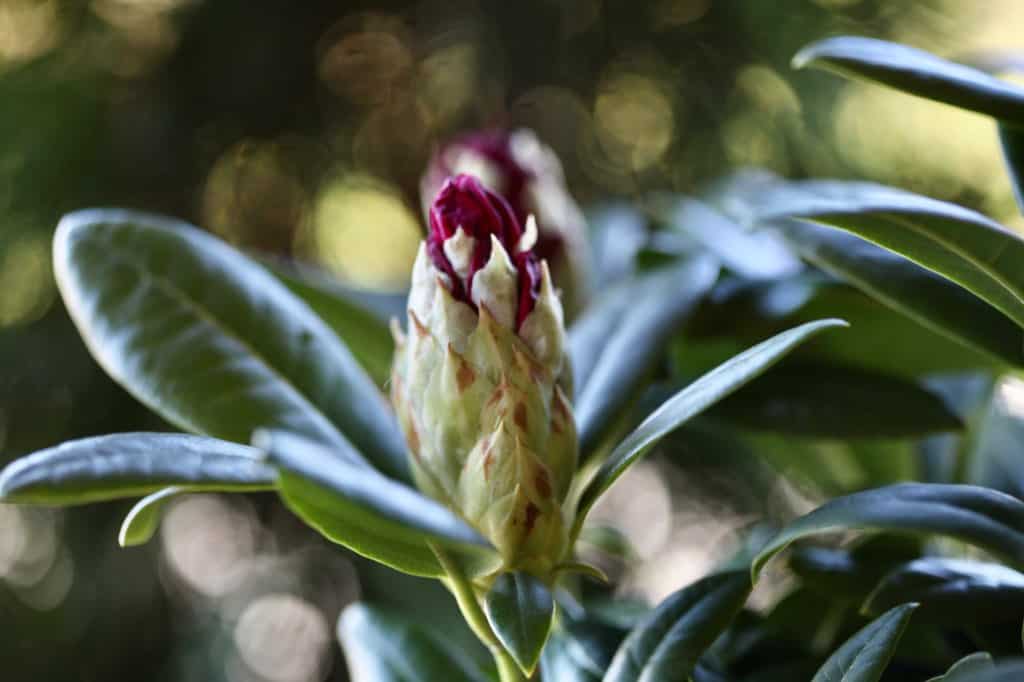
Some Considerations For Pruning
- Elepidote rhododendrons produce leaves at the tips of their stems.
- When pruning, it's important to take the cut back to a part of the branch where new growth buds can be found.
- This way the new growth will form at the tip of the stem for a more natural appearance.
- Decide how far back you will take the stem. Prune down to just above a set of lateral buds.
- The buds will start to grow after the branch is cut.
- If the stems are quite thick where you have made the cut, it will likely take some time before the buds start to grow.
- Lepidote rhododendrons will form the leaves wherever they have been cut, so there no need to take the stem back to leaf buds for this group of plants.
- Pruning will help the new growth get more light. The extra light will help the plant to grow and become bushier.
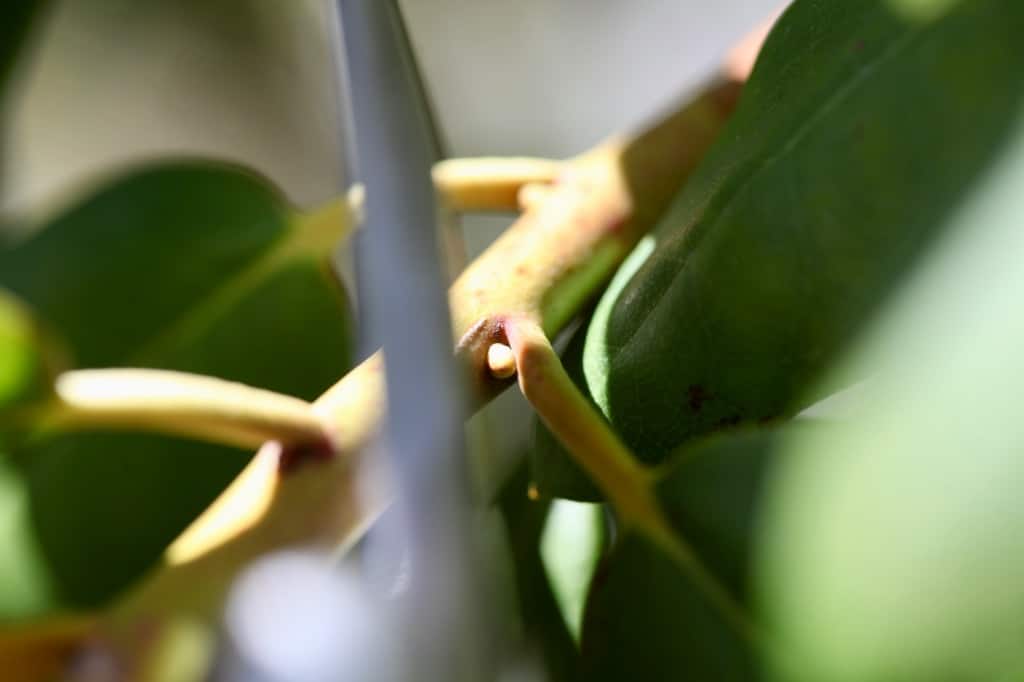
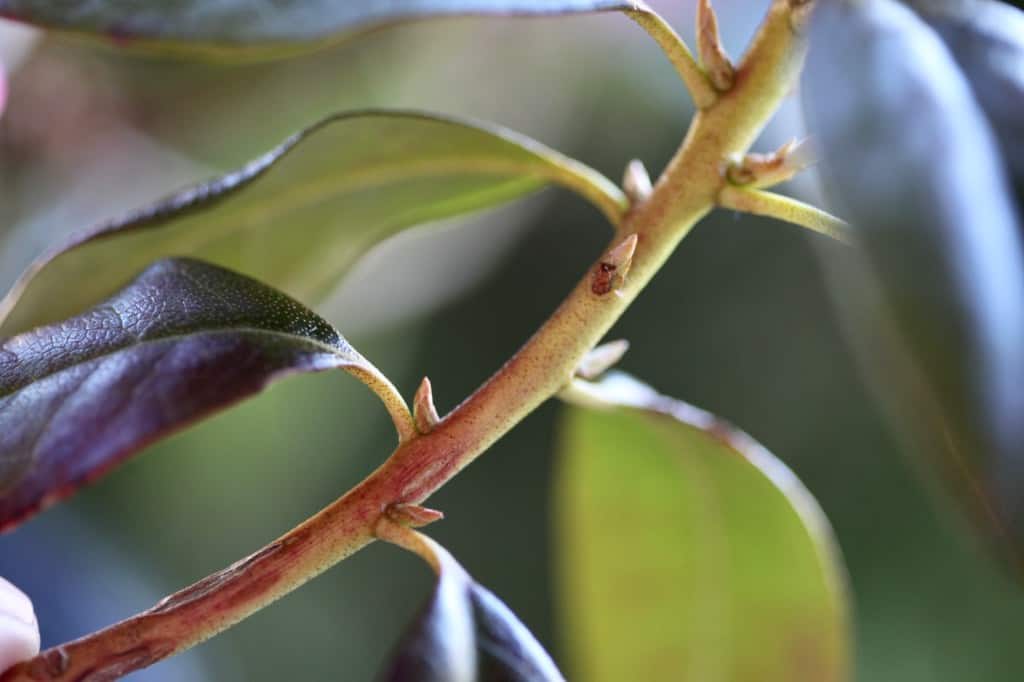
Seasonal Pinch Pruning To Control Growth
- Pinch pruning involves taking out the leaf growth bud at the tip of non-flowering branches, on the rhododendron stems.
- This can be done early in spring before the buds start to grow, and before the plant starts to flower.
- Just snap off the leaf buds at the ends of the branches. This will cause lateral buds down in the leaf axils to grow.
- The resulting stems will be shorter, helping to reduce plant height. The plant will also become bushier with the extra growth.
- Be careful however, to remove only the foliage buds, and not the swelling flower buds. If you remove the flower buds, you will not get any blooms this season.
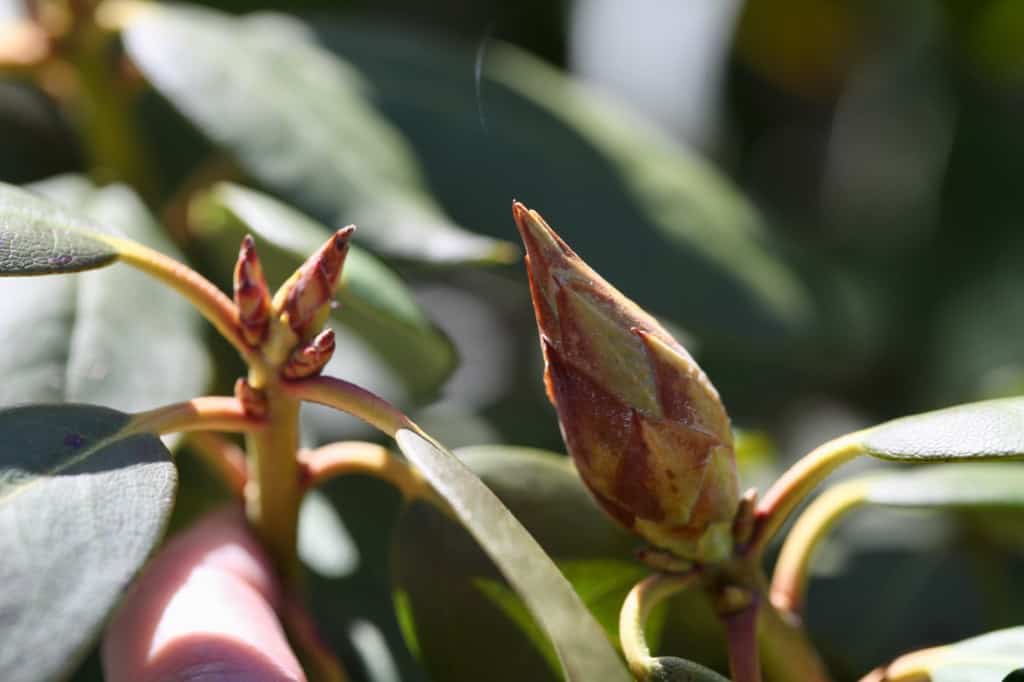
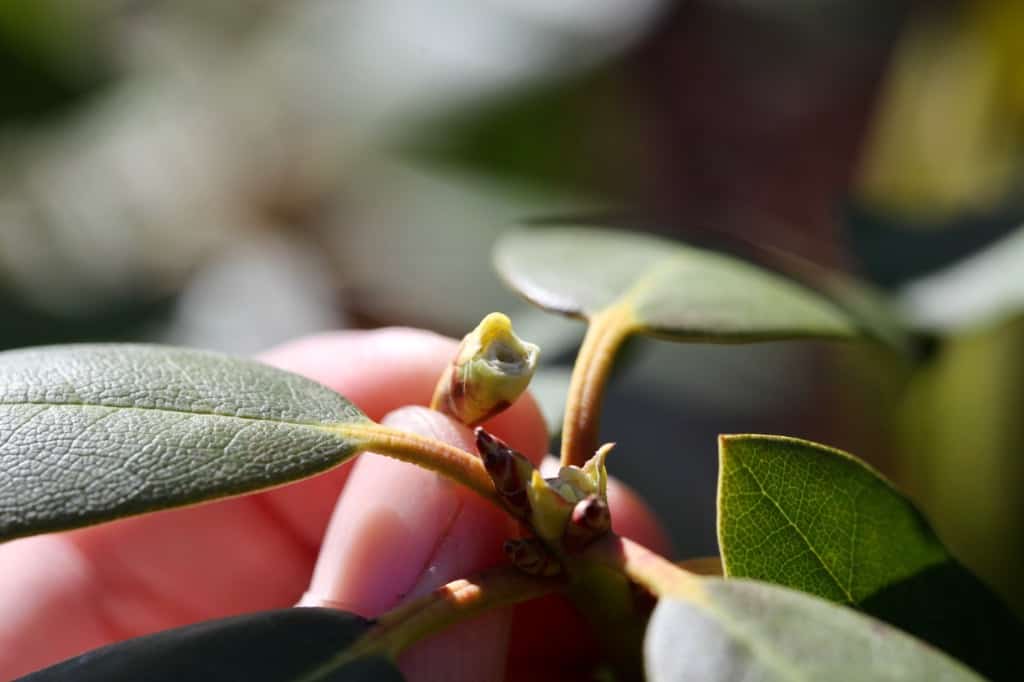
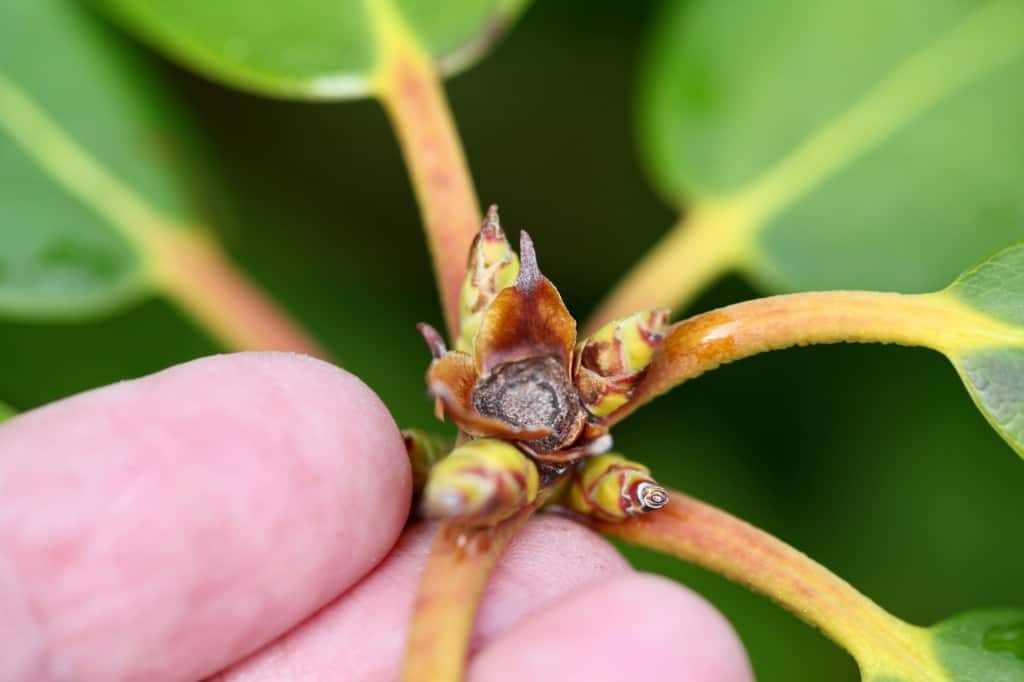
Now let's take a look at how to prune an overgrown rhododendron.
How Do You Prune An Overgrown Rhododendron?
- When pruning for size, some plants will respond better than others.
- You can take out two to three feet of stem if needed, as long as the plants are a good size.
- Decide how far back you want to take the plant.
- Remember, it is best not to remove more than a third of the plant to avoid stressing the plant.
- Look along the woody stems to identify the lateral shoots. These are the little buds which appear as little bumps on the stems.
- Choose a spot to cut the branch right above these buds. After the branch is cut, the buds will start to grow and begin to push out new shoots.
- During the pruning process, step back and observe your work, and look for the right places to cut.
- Trim the branches as you try to make the shrub a symmetrical shape, rather than having branches of different height.
- Taking the shrub down to a manageable size can help to make the plant bushier. This occurs by allowing extra light to reach inside the branches, as well as creating new stem growth
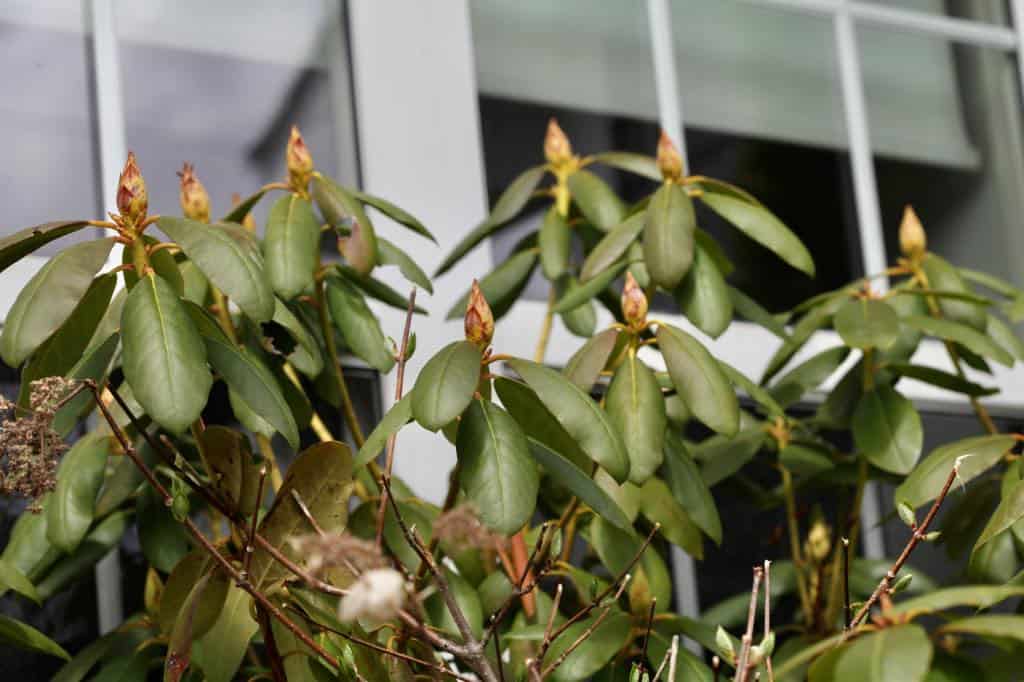
Cutting Rhododendrons Back Hard
- A hard pruning can be stressful on a rhododendron.
- A radical renovation of a rhododendron is cutting the plant back to one foot off the ground.
- There is no guarantee that the plant will survive this drastic technique of severe pruning, although there is a chance that it might.
- If the plant does survive, it will grow.
- With proper care and management, hopefully the plant will become more compact for the space where it is growing.
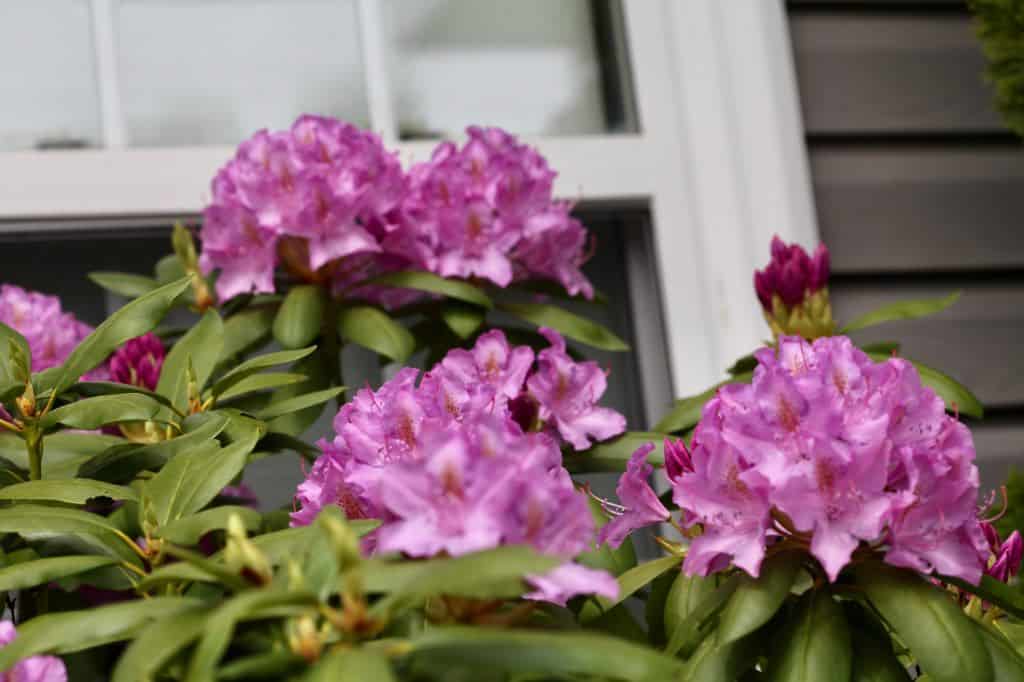
Pruning Off Damaged Wood
- In the case of damaged old wood, prune all the way back to the main branches or centre stem.
- Remove all dead branches from the plant for better plant health and aesthetics.
- Remember to wash your tools after trimming dead wood and diseased branches, to prevent spread of any disease.
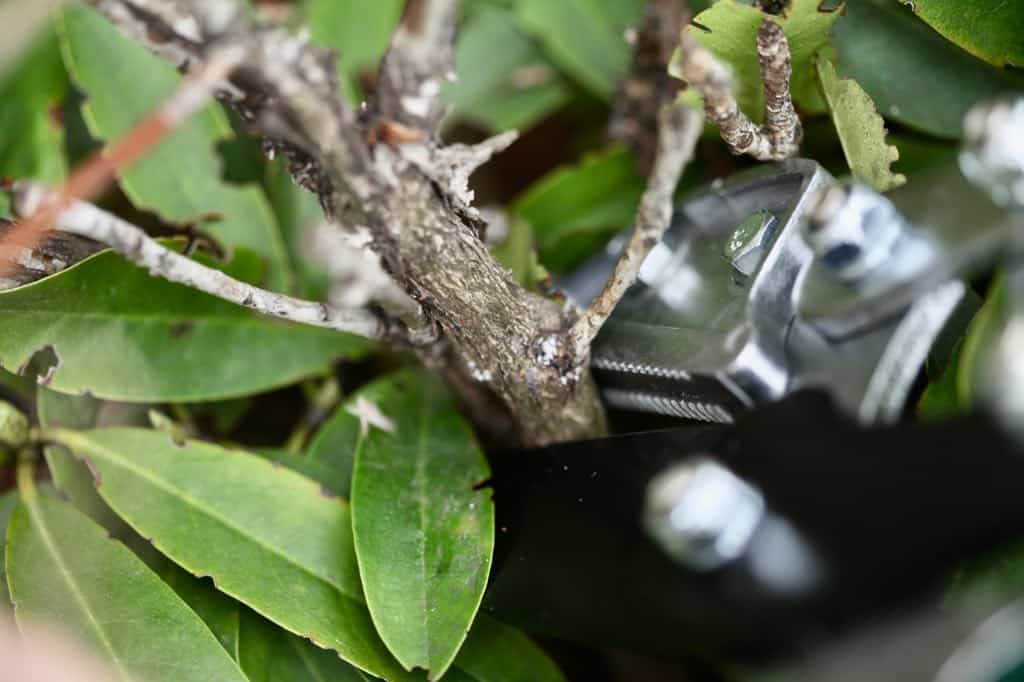
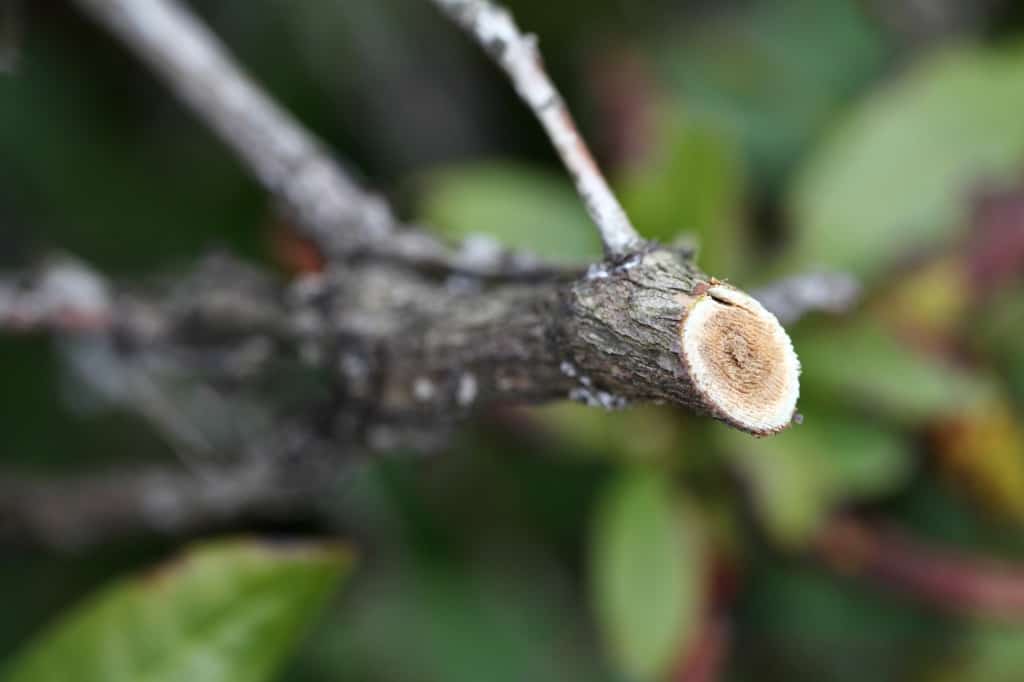
How Do You Prune An Old Leggy Rhododendron?
- Pruning a leggy rhododendron is a great way to stimulate the plant to become bushier.
- You can cut back the long leggy stems, back to an area where leaf buds can be found.
- Observe the branch for the presence of the leaf buds, to determine how far back you will make the cut.
- Step back and look at the plant during the process. Make the cuts to allow for a symmetrical shape of the overall shrub.
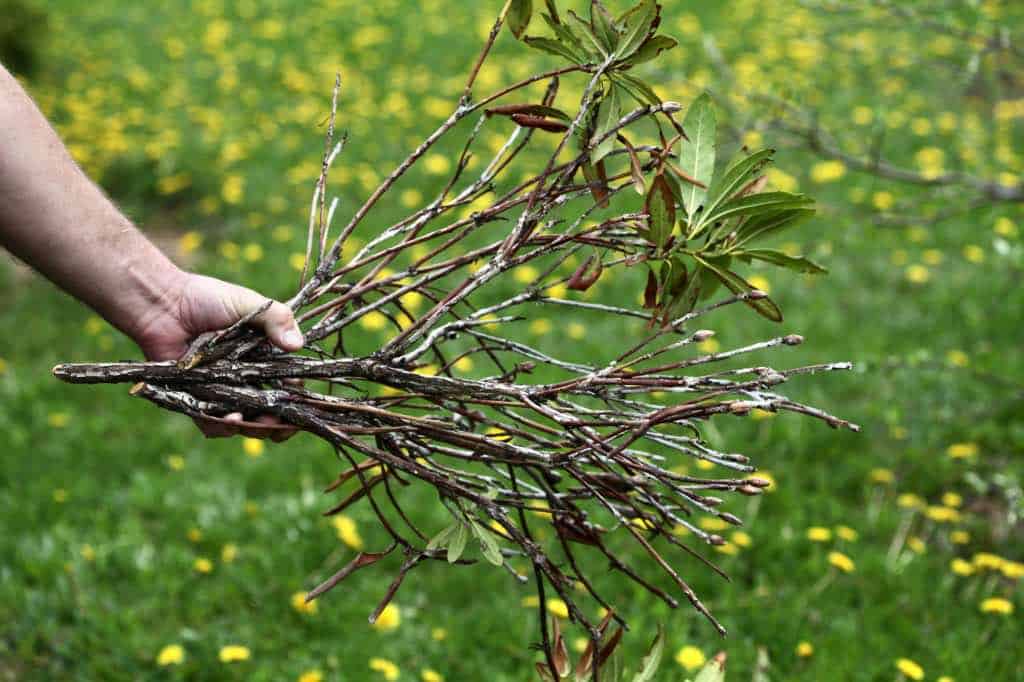
Deadheading After Blooming
- Deadheading spent rhododendron flowers can also be a part of the pruning process, so to speak.
- The deadheading process keeps the plants from putting energy into seed formation. It allows the plant to divert this energy into new spring growth.
- Deadheading after blooming is easily accomplished by snapping off the spent blooms.
- Try to wear gloves while deadheading, as the spent flowers can be quite sticky.
- Deadheading can be considered a part of plant care for rhododendrons in spring.
- If the shrub is large however, deadheading the plant may not be possible.
Conclusion
Rhododendrons put on a glorious show of bright blooms in late spring.
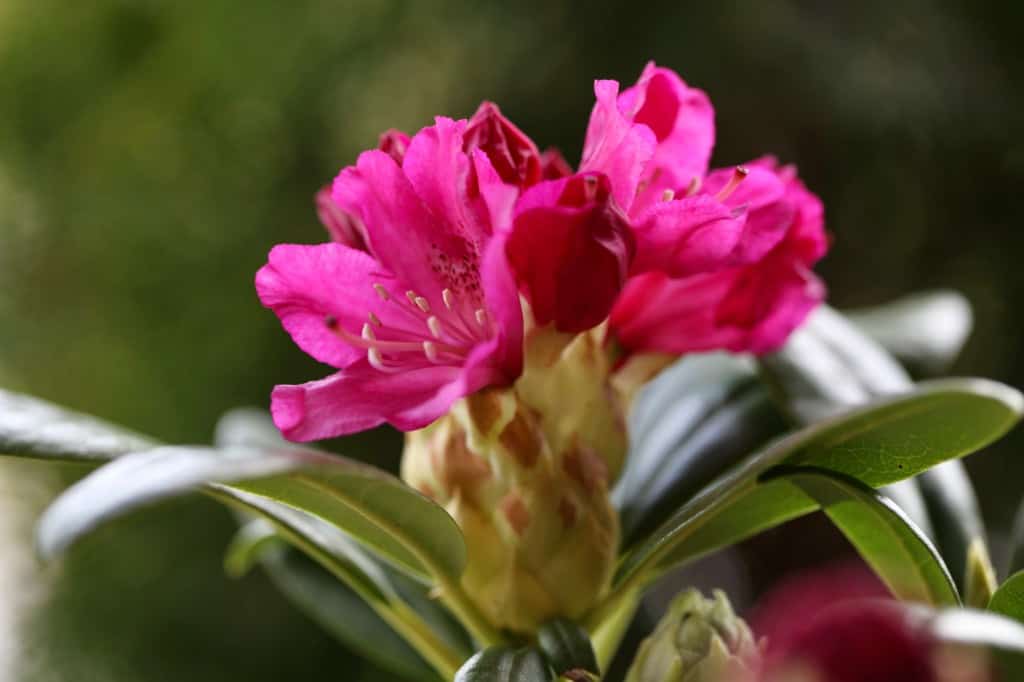
Planting your rhododendron plants in the right location from the start will help prevent the need for a major pruning.
If you do find yourself with an overgrown rhododendron, all is not lost.
Practice good maintenance pruning techniques to reduce the size of your plant, and to make a bushier specimen.
If you want your rhododendrons to stay compact, there is a pruning technique for this as well. Practice pinch pruning of new growth every season to keep your rhododendron plant in better shape.
Snapping off leaf buds early in the season causes multiple shorter shoots to form and grow. That way you will have a shorter and bushier plant.
This year the deer did my pinch pruning for me.
As I observed all of the foliage buds that had been eaten, I was very pleased to see the new shoots growing up and around them.
If only the deer had been selective, and not eaten some of the flower buds as well. Taken as payment for their services, I considered it to be a fair exchange.
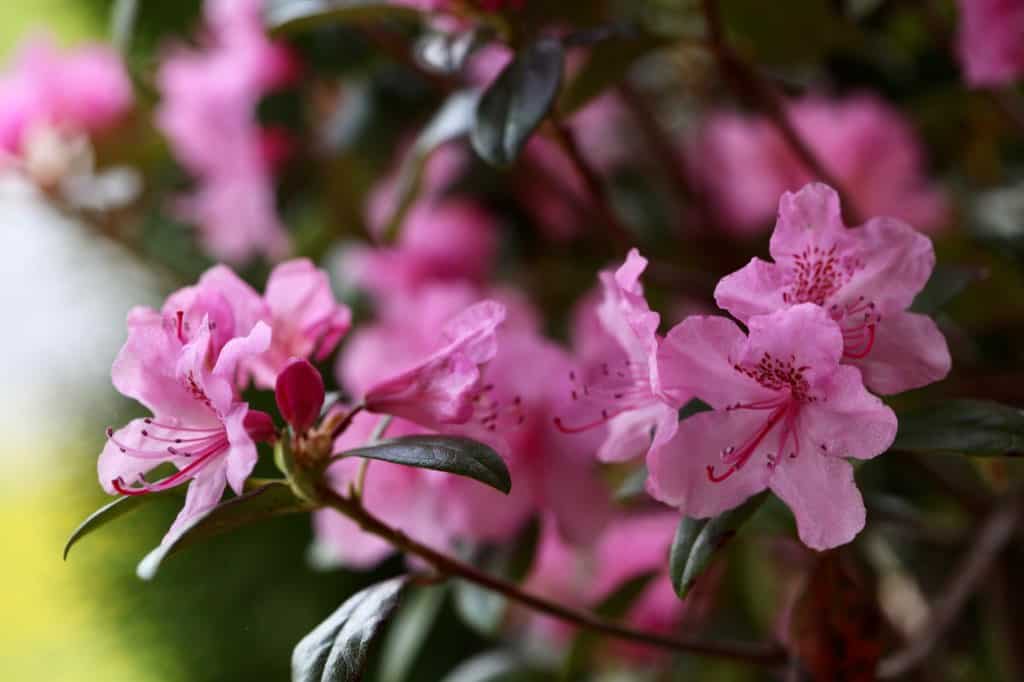
Have you ever tried to prune an overgrown rhododendron? Be sure to leave a comment below to share your experience!
Other Posts You May Like:
PIN IT FOR LATER!
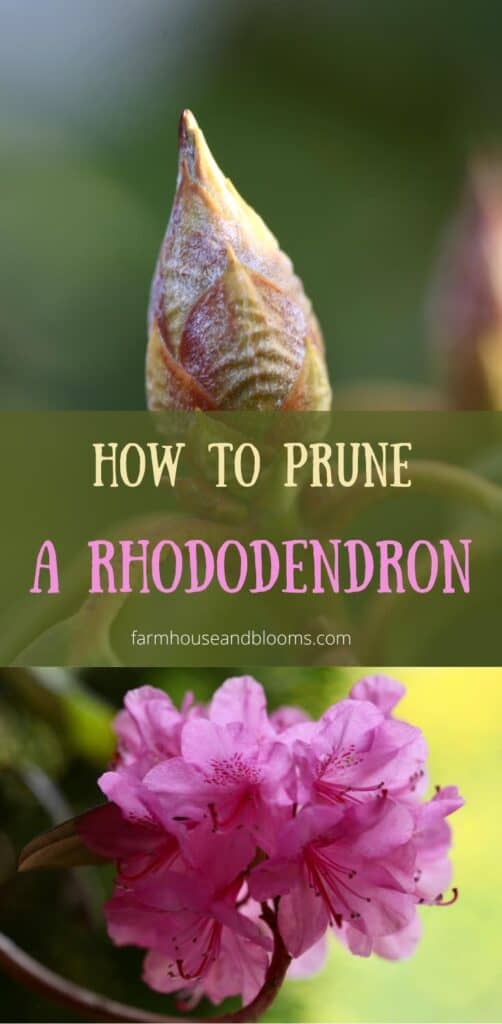
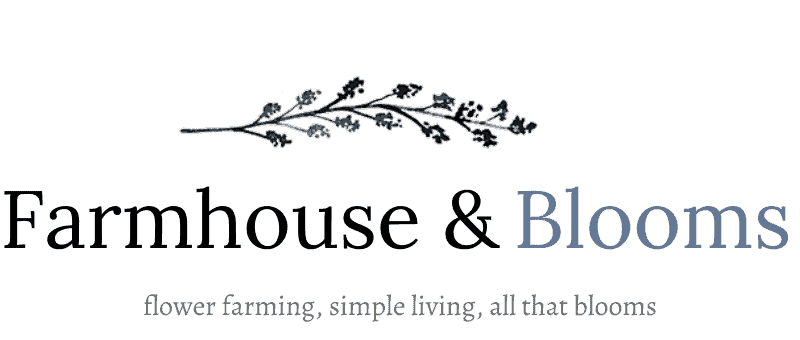

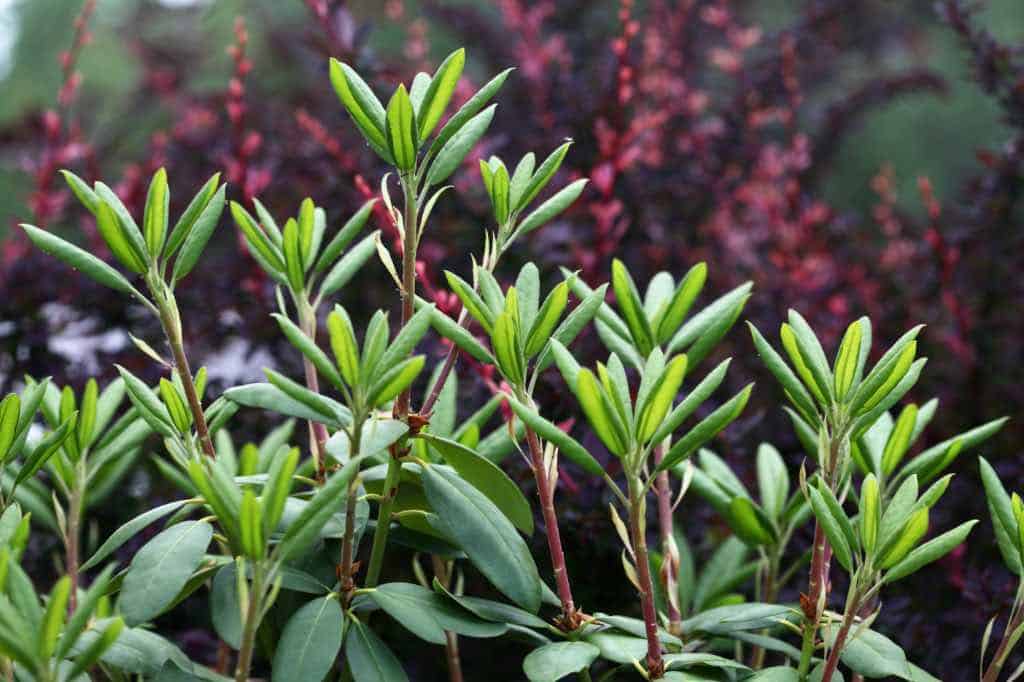
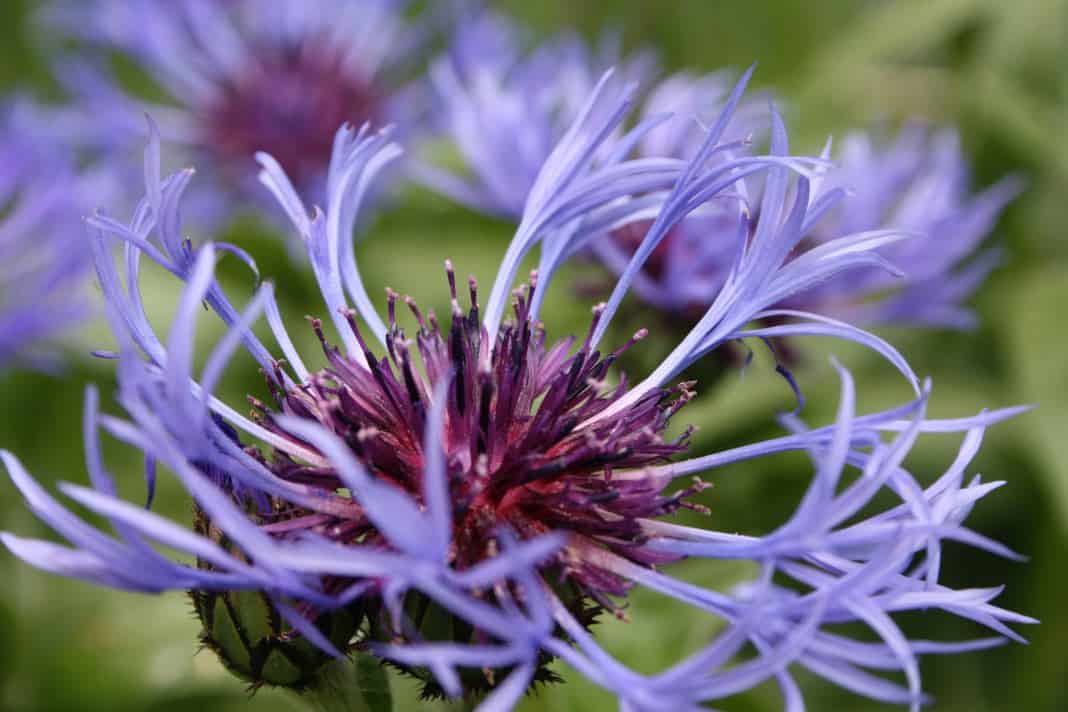
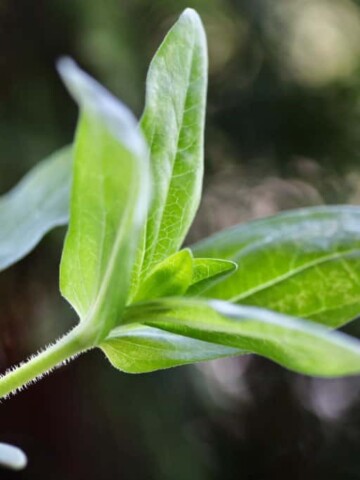
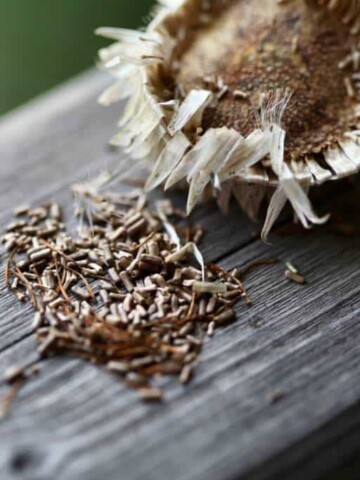


Leave a Reply